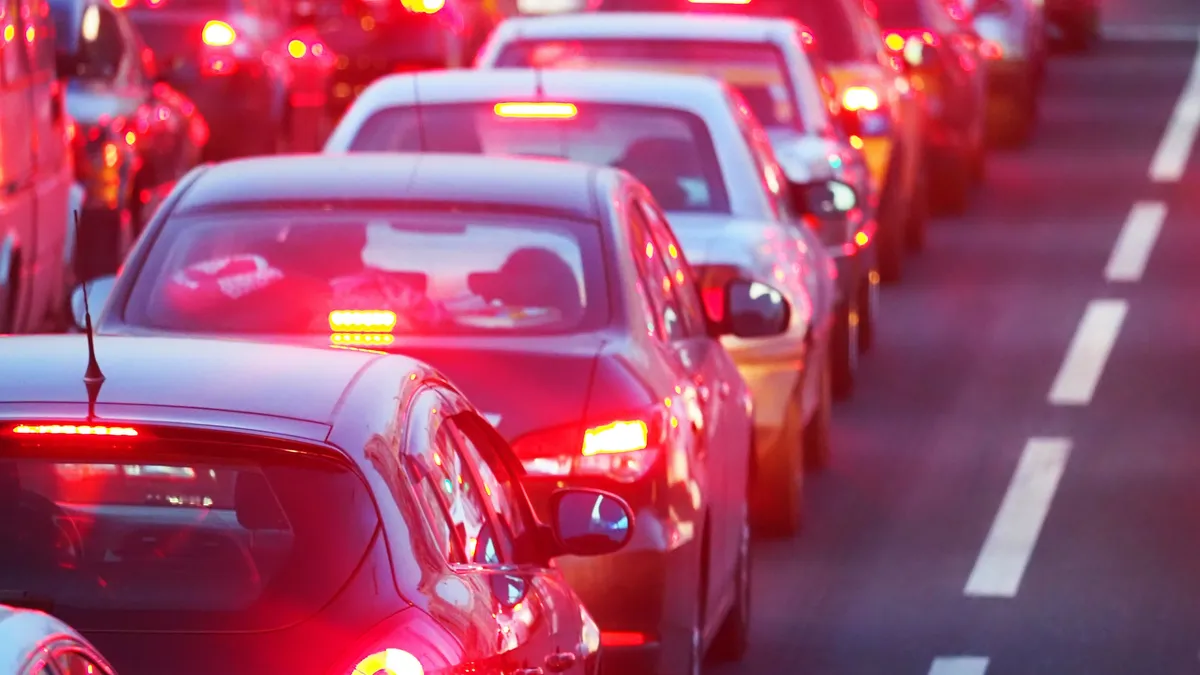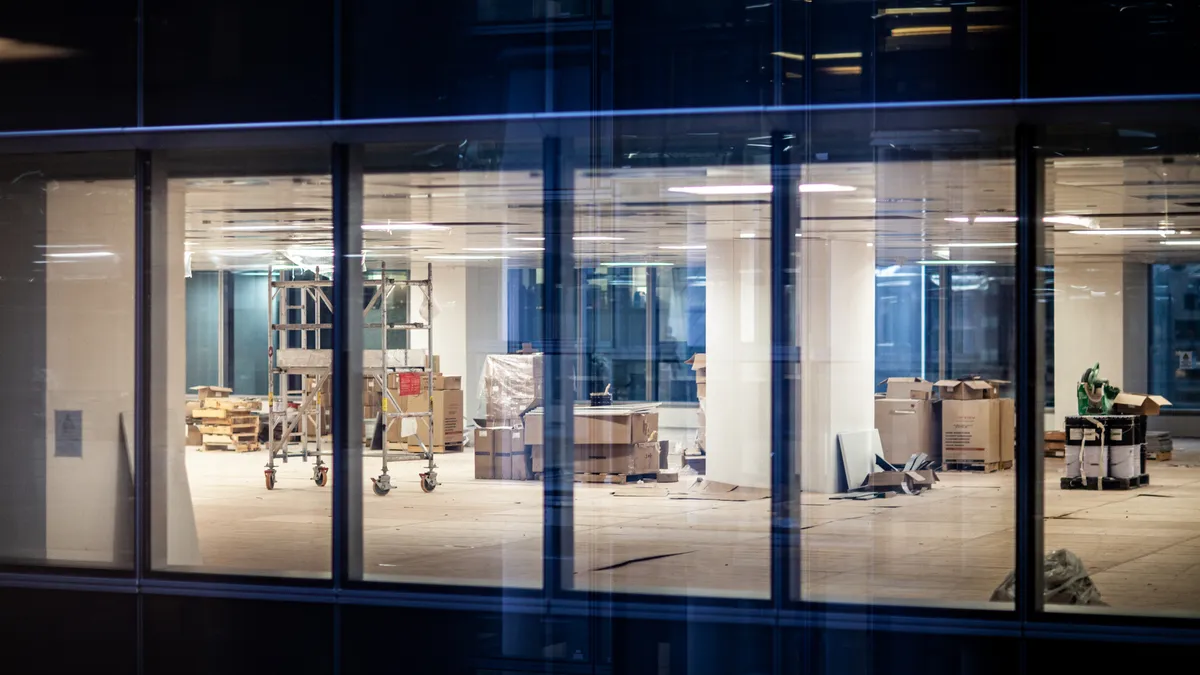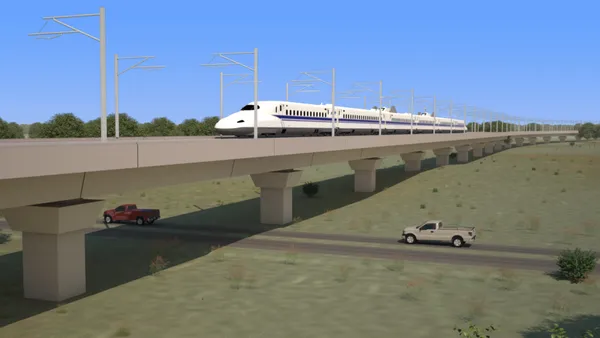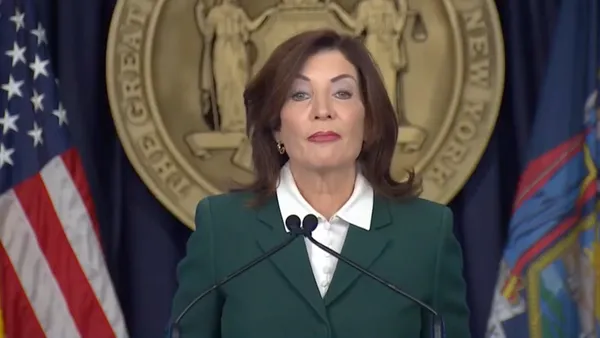Dive Brief:
-
Measures to keep people at home during the COVID-19 pandemic have led to significantly increased traffic speeds in Chicago and Los Angeles, according to new data from transportation analytics company INRIX.
-
INRIX analyzed traffic speeds in 25 of the most populous U.S. cities from March 11 through March 18. By the morning of March 18, drivers in Chicago traveled 77% faster than usual, and Los Angeles drivers traveled 53% faster. Atlanta saw the smallest change in traffic speeds, with drivers traveling 16% quicker than usual.
-
"Dramatic changes in travel speed continue to spread across the country," Trevor Reed, INRIX transportation analyst, said in a emailed statement on March 19. "If current trends persist, it is probable major congestion will cease to exist in the country’s most congested cities within the week."
Dive Insight:
Last week, INRIX released a study on current buying behaviors and traffic patterns in Seattle, "the U.S. epicenter of COVID-19," to provide other cities with a preview of what they can expect as the virus continues to spread. The study found visits to bulk retailers have increased, while trips to grocery stores and malls have fallen amid concerns about exposure to crowds.
The company also found that travel to downtown Seattle dropped 36% on average the week of March 9 compared to usual rates. Morning trips dropped nearly 40% into downtown Seattle, with trip times averaging 32 minutes that week instead of the typical 42 minutes. Meanwhile, average morning speeds on interstates and state highways in the Seattle area increased by 15 mph, reaching almost "free flow" or no congestion speeds, according to a blog post.
The new data to illustrate changes in cities beyond Seattle serves as a stark contrast to the results of a congestion report that INRIX published earlier this month, finding that Boston, Chicago, Philadelphia, New York City and Washington, DC were the most congested cities in the U.S., respectively.
At the time, Reed suggested curbside management and car-free zones as potential solutions to congestion. Today, cities are using their curbs and car-free plans in entirely new ways to mitigate the effects of the pandemic.
In Austin, TX, curbs are now used to help support pick-up only services for local restaurants. The transportation department has installed temporary curbside pick-up zones and aid on-street parking is being converted to loading zones for customers to grab their food.
And in New York, car-free streets are being considered not just for pedestrian safety and ease, but for health reasons. New York Gov. Andrew Cuomo recently called on Mayor Bill de Blasio to ban cars, giving pedestrians more room to walk at a safe distance from each other.
To keep up with all of our coverage on how the new coronavirus is impacting U.S. cities, visit our daily tracker.











